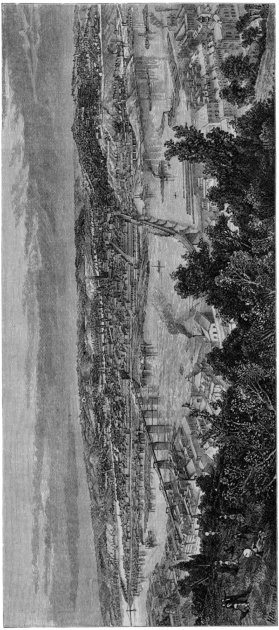
VIEW OF PITTSBURGH
|
Through miles of underground pipes giant pumps force crude petroleum
from the wells to acres of odoriferous refineries that add their smoke
to the perpetual cloud of carbon that marks Pittsburgh from afar.
The lens will show that a drop of water
teems with life, and in this paper, pencil, pen, and graver must stand
in lieu of the microscope, serving to give our readers a glimpse of what
is held in the circle of that black spot on the map of Pennsylvania.
To write of the Pittsburgh of the past is
to repeat the labor of the historians. Fort Duquesne and Braddock's
disastrous field are topics familiar to the American school-boy;
and though the earlier days of the busy city are full of an interest
peculiarly their own, it is the province of this paper to deal rather with
the Pittsburgh of 1880 than with the noted fort of 1750 or the Pittsburgh
of 1780. This much can, however, be outlined. George Washington,
on November 24, 1753, stood at the junction of the two rivers, and
made this entry in his journal of that date: "I think it extremely
well situated for a fort, as it has absolute command of both rivers."
During the following year the |